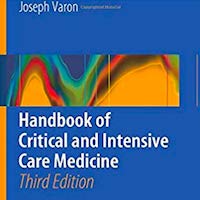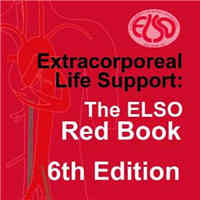Tag: surgery
House Officer’s Guide to ICU Care
Your Must-Have Guide for Navigating the ICU The House Officer's Guide to ICU Care is an eminently practical handbook for junior house officers, medical students, PAs, and nurses that offers nuts-and-bolts guidelines for optimal... read more
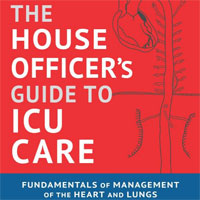
High Rate of PICS Among SICU Survivors
Through the successful implementation of a multidisciplinary critical care outpatient clinic (CCOC), this study identifies an exorbitant rate of postintensive care syndrome (PICS) among surgical intensive care unit (SICU)... read more
Nasotracheal Intubation on Postoperative Neonates with Congenital Heart Disease
Nasotracheal intubation (NTI) is feasible and safe in neonatal cardiac surgery. System-level engagement with stakeholders is necessary to change clinical practice. NTI facilitates early SLP evaluation and treatment and significantly... read more
Postoperative Sepsis Infection Can Be Identified Using Gene Expression Signatures
Host biomarker signatures may be able to identify postoperative infection or sepsis up to three days in advance of clinical recognition. If validated in future studies, these signatures offer potential diagnostic utility... read more
Damage Control in Trauma Care: An Evolving Comprehensive Team Approach
This book describes current, evidence-based guidelines for damage control interventions across the field of trauma care with the aim of enabling clinicians to apply them to best effect in daily clinical practice. Emphasis... read more

The impact of physical medicine and rehabilitation consultation on clinical outcomes in the SICU
The impact of a physical medicine and rehabilitation (PM&R) consultation on clinical outcomes in critically ill surgical patients remains unclear. The aim of this study is to examine whether the patients who received PM&R... read more
PPIs Should Not Be Prescribed for Upper GI Bleeds
The topic of PPIs for upper GI bleeds was one of the first posts on First10EM. There is no new evidence, and the bottom line is the same (just don’t use them), so if you are a long time reader, you can probably skip this... read more
Long-term Outcomes of Hospital Survivors Following an ICU Stay
Australian patients admitted to ICU who survive to discharge have worse long-term survival than the general population, except for the elderly admitted to ICU following cardiac surgery. These findings may assist during goal-of-care... read more
Casemix, management, and mortality of patients receiving emergency neurosurgery for TBI
Patients receiving emergency neurosurgery for traumatic brain injury (TBI) differed considerably in their admission characteristics and management across human development settings. Level of human development was associated... read more
Cluster ICU Treatment Strategies for TBI by Hospital Treatment Preferences?
Although correlations between treatment policies within domains were found, the failure to cluster hospitals indicates that a specific treatment choice within a domain is not a proxy for other treatment choices within or... read more
Postoperative Critical Care for Adult Cardiac Surgical Patients
This text reviews the postoperative management of patients who have undergone cardiac surgical procedures, some of the most common and most complicated forms of surgery. These patients and their management are characterized... read more
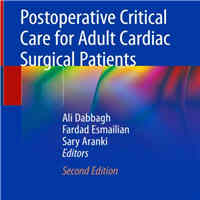
Cardiac Anesthesia: The Basics of Evaluation and Management
This concise book meets the market need for an accessible and up-to-date guide on understanding and managing cardiac anesthesia patients. It reflects the continual evolution of the very complex field of cardiac anesthesia.... read more
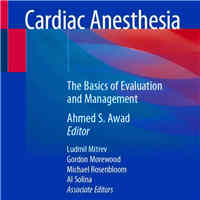
Intraoperative Hypotension and AKI after Noncardiac Surgery in Infants and Children
In distinct contrast to adults, the authors did not find any association between intraoperative hypotension and postoperative renal injury. Avoiding short periods of hypotension should not be the clinician’s primary concern... read more
Safe Tracheal Extubation After General Anesthesia
Tracheal extubation generates less interest than tracheal intubation. Research, guidelines and clinical anecdotes tend to focus on airway management at the beginning of anesthesia, and it is rare for the challenges of extubation... read more
Foley Catheter Tamponade Usage for Bleeding Control in Penetrating Injuries
We recently used a Foley catheter to manage a stab wound to the left anterior neck (zone 1) in a 26 year-old male. Police arrived shortly after the incident but couldn’t stop the bleeding with external compression with... read more
Preoperative POCUS to Identify Frailty and Predict Postoperative Outcomes
Similar to computed tomography measurements of psoas muscle area, preoperative ultrasound measurements of quadriceps depth shows promise in discriminating between frail and not-frail patients before surgery. It was also associated... read more
Impact of Mobilization on Vital Signs and Oxygen Saturation in Open-Heart Surgery
Early and frequent mobilization did not cause vital signs and oxygen saturation to deviate from normal limits in open-heart surgery patients. The difference between pulse and systolic blood pressure values measured before... read more
Endothelial Glycocalyx Degradation Contributes to Metabolic Acidosis in Children After Cardiopulmonary Bypass Surgery
Our data show that metabolic acidosis (increased strong ion gap) is associated with plasma concentration of heparan sulfate, a negatively charged glycosaminoglycan cleaved from the endothelial glycocalyx during cardiopulmonary... read more
Diaphragm Dysfunction After Cardiac Surgery
Symptomatic diaphragmatic dysfunction was found in 7.6% of patients after cardiac surgery. It led to an increase of respiratory complications, such as pneumonia, prolonged ventilation, and intensive care. Coronary bypass... read more
Perioperative Dexmedetomidine on the Incidence of Postoperative Delirium
Delirium occurs commonly following major non-cardiac and cardiac surgery and is associated with: postoperative mortality; postoperative neurocognitive dysfunction; increased length of hospital stay; and major postoperative... read more
Nitrous Oxide Avoidance for Patients Undergoing Major Surgery
Avoidance of nitrous oxide and the concomitant increase in inspired oxygen concentration decreases the incidence of complications after major surgery, but does not significantly affect the duration of hospital stay. The... read more
Computer-assisted Individualized Hemodynamic Management Reduces Intraoperative Hypotension
In patients having intermediate- to high-risk surgery, computer-assisted individualized hemodynamic management significantly reduces intraoperative hypotension compared to a manually controlled goal-directed approach. All... read more





